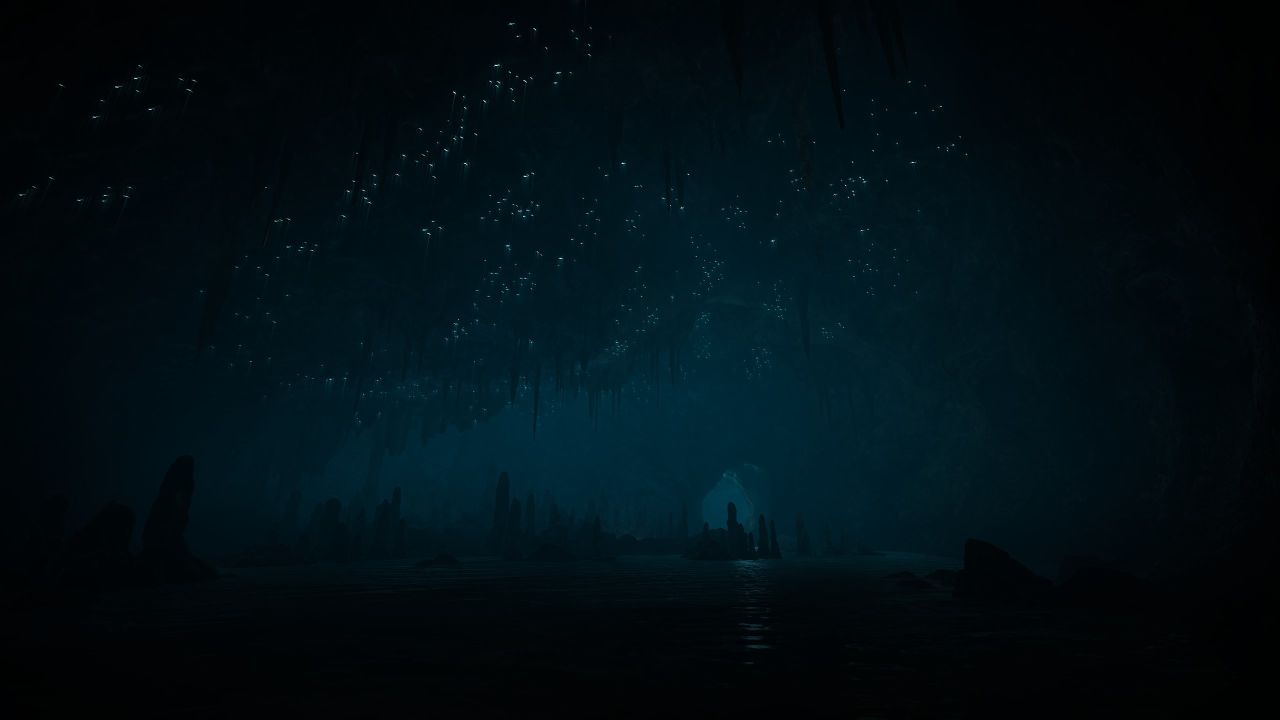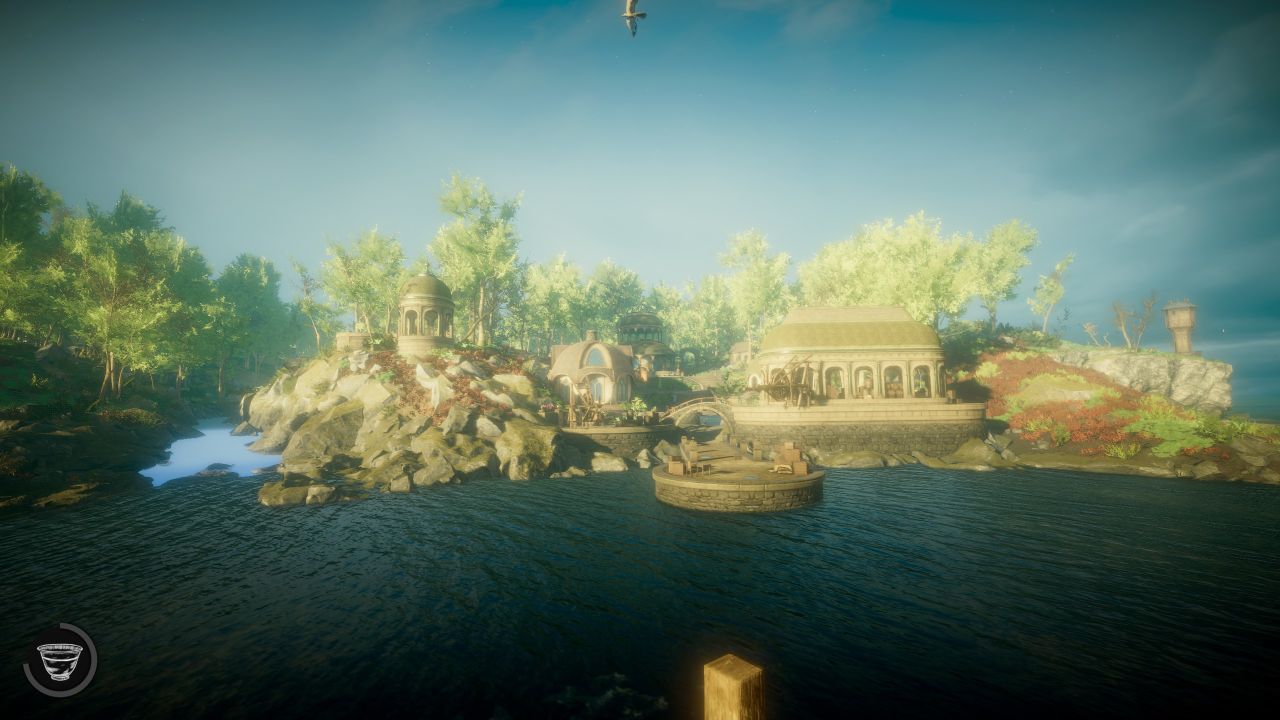You see, Eastshade does one thing very, very well. In fact, it does it so well that most players probably won’t even have noticed until they look back and really think on it. Eastshade teaches mindfulness, a keen and acute awareness of oneself and one’s surroundings in the present moment. And that, my friends, is where the appeal comes from. When I first played Eastshade, I was in a bad way. I won’t go too deep into it, but suffice it to say that your boy was newly single, living alone in a run-down, thin-walled apartment while slaving away at a job I absolutely despised and wishing it would all just end. I was very much desperate for an escape from reality. Enter Eastshade: a peaceful, literally painterly first-person RPG, set in a low-stakes world of anthropomorphic animal people on a lightly enchanted, idyllic isle. Awesome, great, let’s have at it. You are Firstname Lastname, and your mother has died. Perished, bought the farm, kicked the bucket, punched her ticket. Her final wish was that you should visit her favorite place in the world, the island of Eastshade, and paint the places that were dear to her. As far as narrative goes, that’s all the game gives to you. You are not given anything to suggest one way or another your character’s relationship with their late mother, the manner of her passing, or her relationship with the inhabitants of the isle. The player character is, pardoning the pun, a blank canvas. It’s certainly a well-trodden trope, but it’s not particularly engrossing, nor immersive for my tastes. I find it hard to relate to characters when they themselves exist in fantastical worlds for nebulous reasons. In Eastshade, though, the world is grounded, allowing for a very human story to be told in a world without humans. I lost my own father at the tender age of 10, and I’ve no doubt many of you have lost a parent or other loved one; such a relatable experience is one of the things that makes the fantasy in Eastshade so believable. Suddenly, I wasn’t playing a game about another person in another world, I was playing a game about myself, seeking closure in a strange land that was indifferent to my existence. The player character is given an objective and gentle guidance, but Eastshade is more of a contemplative journey than a story. It’s the experience of exploring the island, the people you meet and help, the places you paint; those are the elements of the game that stick with you when the credits roll. And what you take away from that experience will say more about you as a player than it will say about any ideas or messages the writers may have had. This hands-off approach challenges players to look at who they themselves are - not just in terms of the things they’ve experienced, but what those experiences mean to them. While your late mother’s favourite places are set in stone, how you paint them is entirely up to you, and can result in wildly different paintings for different players. A player who had a difficult relationship with their parent might choose to paint one of the 4 objective locations during an eclipse, the ominous red light of the sky casting a baleful hue on the landscape. On the flipside, someone who had a very good relationship with their parent might choose to capture each location at their most vibrant, warm sunlight seemingly causing every colour in the scene to pop. The player is able to form a strangely personal interpretation of an island that isn’t real, capturing Eastshade as it exists in their mind, filtered through the lens of people who will never, see it. Your journey is largely a lonely, personal one, accentuated by stringed instruments and sprawling vistas that encourage introspection. You’re free to keep almost everything that you paint, forming a sort of travelogue documenting your time spent wandering the island. Towards the end of the game, I looked through mine and found myself cringing at the first few paintings: the silhouette of a man standing alone against the night sky; a shipwreck abandoned in an icy strait, a ruined tower mouldering in the sunset. Decay and loneliness were common motifs. I was unhappy, I was hurting and scared, longing for better days. But I noticed something as I continued looking at the pictures. Foggy night skies were broken up by scenes of glimmering sunlight, panoramic views of the near-celestial city of Nava, and peaceful glimpses of trickling streams running beneath dense canopies. The last few pictures were almost all bright and sunny shots of various landmarks or interesting hidden places I’d found, a few even being of people I’d found particularly charming. These most recent all had a sense of happiness and hopefulness to them that was largely absent from my earlier captures. They depicted places I found to be particularly charming, that I’d like to remember. It struck me that who I’d been mourning in place of the player character’s mother was in fact a version of myself. I became thankful to have a roof over my head, no matter how quaint, and to have a family and friends who loved me. I wanted to get out and discover things in the real world in the same way I had revelled in discoveries in EastShade. I met myself, sensitive and quiet and hopeful, and I learned to love that person again. Eastshade held a mirror up to me in a way that few other experiences have. How I painted each location revealed more to me about myself than I perhaps knew was possible. And when I looked back over the experience, over the journey I’d taken with myself, I realised that while Eastshade never tried to tell me a story, it was trying to tell me something: There is beauty in suffering and there is beauty in joy. Life is what happens in between both; a thread linking each beautiful experience together into one cohesive picture. And if you just take a moment to get out of your own head and appreciate that picture – that painting, if you will – you’ll see that there’s so much beauty in this world of ours. It is that beauty that makes this life worth the living.


